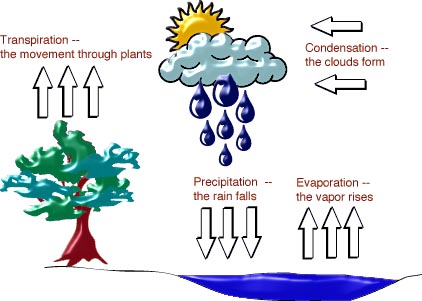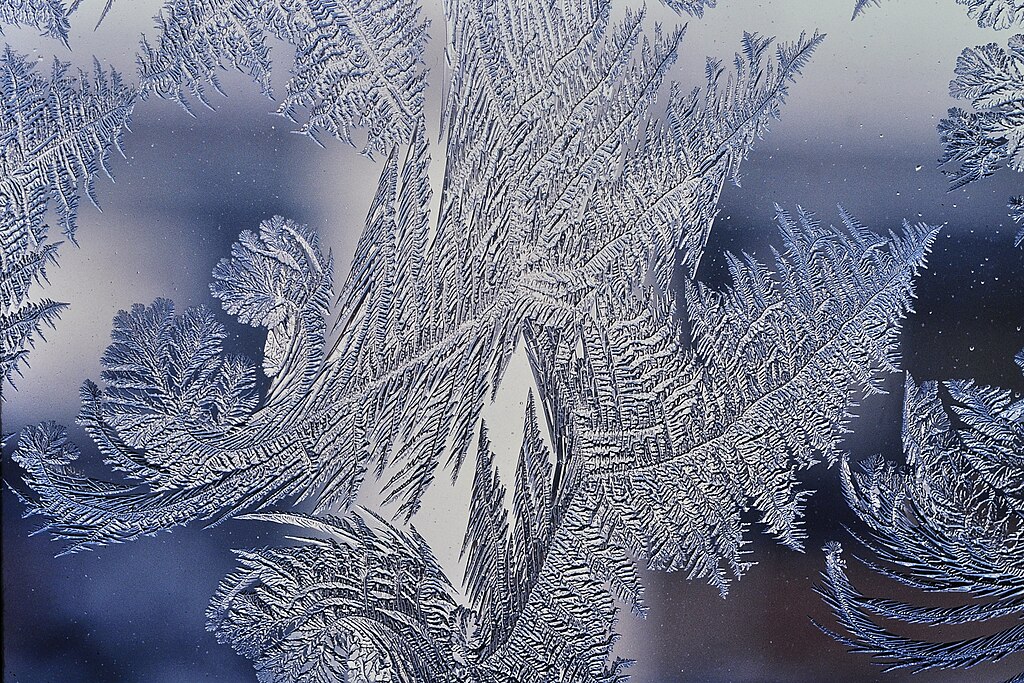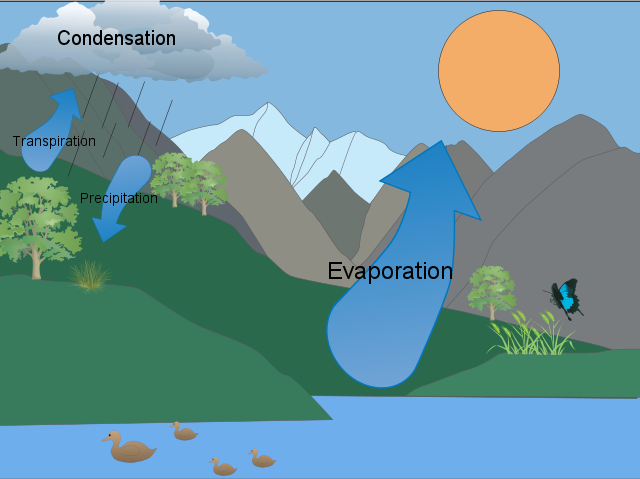One way that water moves up into the atmosphere is from the soil. Liquid water in the soil turns into water vapor (gas form) and escapes into the air. This process is called evaporation. If you pour a cup of water into a pot of dirt and leave the pot for a day or two, the dirt will be dry. The water has evaporated. Evaporation is faster when it is hot or when it is windy.
Another way water moves into the atmosphere is through plants. Plants take up water from the soil into their roots. The water is then released through their leaves. This process is called transpiration. If you put a plastic bag over a plant and come back in an hour or two, you will see moisture on the inside of the bag. This moisture shows that the plant is releasing water through its leaves.

Evaporation and transpiration are both part of the water cycle. Together, they are called evapo-transpiration. It is important to find out how plants affect evapo-transpriation, especially in desert areas where we want to conserve water. More plants might mean less evaporation, because plants can keep the soil cool. Plants can also block the wind. Or more plants might mean more transpiration, because plants take water out of the soil.
Processes
Precipitation
Condensed water vapor that falls to the Earth's surface . Most precipitation occurs as rain, but also includes snow, hail, fog drip,graupel, and sleet. Approximately 505,000 km3 (121,000 cu mi) of water falls as precipitation each year, 398,000 km3 (95,000 cu mi) of it over the oceans. The rain on land contains 107,000 km3 (26,000 cu mi) of water per year and a snowing only 1,000 km3(240 cu mi). 78% of global precipitation occurs over the ocean.
Canopy interception
The precipitation that is intercepted by plant foliage, eventually evaporates back to the atmosphere rather than falling to the ground.
Snowmelt
The runoff produced by melting snow.
Runoff
The variety of ways by which water moves across the land. This includes both surface runoff and channel runoff. As it flows, the water may seep into the ground, evaporate into the air, become stored in lakes or reservoirs, or be extracted for agricultural or other human uses.
Infiltration
The flow of water from the ground surface into the ground. Once infiltrated, the water becomes soil moisture or groundwater.
Subsurface flow
The flow of water underground, in the vadose zone and aquifers. Subsurface water may return to the surface (e.g. as a spring or by being pumped) or eventually seep into the oceans. Water returns to the land surface at lower elevation than where it infiltrated, under the force of gravity or gravity induced pressures. Groundwater tends to move slowly, and is replenished slowly, so it can remain in aquifers for thousands of years.
Evaporation
The transformation of water from liquid to gas phases as it moves from the ground or bodies of water into the overlying atmosphere. The source of energy for evaporation is primarily solar radiation. Evaporation often implicitly includes transpiration from plants, though together they are specifically referred to as evapotranspiration. Total annual evapotranspiration amounts to approximately 505,000 km3 (121,000 cu mi) of water, 434,000 km3 (104,000 cu mi) of which evaporates from the oceans. 86% of global evaporation occurs over the ocean.
Sublimation
The state change directly from solid water (snow or ice) to water vapor.
Deposition
This refers to changing of water vapor directly to ice.
Advection
The movement of water — in solid, liquid, or vapor states — through the atmosphere. Without advection, water that evaporated over the oceans could not precipitate over land.
Condensation
The transformation of water vapor to liquid water droplets in the air, creating clouds and fog.
Transpiration
The release of water vapor from plants and soil into the air. Water vapor is a gas that cannot be seen.
Percolation
Water flows vertically through the soil and rocks under the influence of gravity
Plate tectonics
Water enters the mantle via subduction of oceanic crust. Water returns to the surface via volcanism.











No hay comentarios:
Publicar un comentario